13 Best Gaudi Sites in Barcelona
Get Your Gaudi On! Catalonia’s most famed architect, Antoni Gaudí and his works are a quintessential part of the Barcelona experience. Here’s a comprehensive guide with everything you need to know about the 13 Best Gaudi Sites in Barcelona.
Popularised by his perplexing, mythical-like creations that surfaced from the ground-breaking heat of the Modernisme movement (the Catalan equivalent of Art Nouveau), the magnificent myriad of his creations can be found today within the heart of Spain’s beautifully bustling Barcelona.
Here’s what we cover in this Gaudi guide:
13 Top Attractions, including Casa Batllo, Park Guell, Sagrada Familia & More
More Gaudi Attractions
Barcelona Sightseeing Passes
Best Time to Visit Barcelona
How to Get Around Barcelona
FAQs
Casa Batlló
Location: Passeig de Gràcia, 43, 08007 Barcelona
Entry Fee: Yes
Initially built in 1877 and restored by Gaudí in the 1900s, Casa Batlló is famous for its undulating, dragon-esque shape and vivid, eye-catching design.
Casa Battló looks particularly captivating in the morning light when the sun shimmers against the scale-like tiles on the rooftop.
See all the highlights on this top-rated Casa Batllo tour with an audioguide.
This UNESCO Heritage Listed Mansion was heavily influenced by the Art Nouveau style and is embellished with mosaics made from broken ceramic tiles.
The protuberant balconies and soaring sandstone structures enticingly lead the eye up to the peak of the roof, which is arched and likened to a dragon.
Casa Batlló’s interior embellishes Gaudí’s love for natural and organic shapes, featuring asymmetrical stained-glass windows, vibrant mosaics, curvaceous, maze-like vaults, and a loft likened to a rib cage.
Casa Batllo is one of the best Gaudi sites in Barcelona, and it’s certainly a spot you can’t miss!
If you appreciate live jazz, blues, pop or funk music, Casa Batlló puts on a sell-out series of live concerts called the Magic Nights. This is the perfect summer evening experience; the warm Mediterranean breeze and a sneaky bev or four. To avoid queuing up for hours or running the risk of missing out, it’s best to book well in advance.
Palau Güell
Location: Carrer Nou de la Rambla, 3-5, 08001 Barcelona
Entry Fee: Yes
The peculiar Palau Güell is a true gem nestled within this urban utopia. As one of the first major commissions of Gaudí’s career, this building magnificently displays myriad modernist architecture.
Shifting between the dynamics of both palace and playground, the Palau Guell stands out particularly for the intricate interplay of light and space, accentuated with touches of traditional materials such as wrought iron, ceramics, glass, wood and stone.
This UNESCO World Heritage Site truly encapsulates the unique essence of Gaudí and provides a stellar opportunity to dive into his creative mind. Save yourself time, money, and stress by booking your tickets online and in advance.
Casa Milà (La Pedrera)
Location: Passeig de Gràcia, 92, 08008 Barcelona
Entry Fee: Yes
Built from 1906 to 1912, ‘The Stone Quarry’ was designed to evoke the sense of a snowy mountain.
La Pedrera encapsulates two buildings via an intriguing, light-filled courtyard, highlighting Gaudí’s adoration for geometrical and natural motifs.
Ditch the queues with this Casa Mila skip-the-line ticket with an audioguide.
The building features epic interiors with undulating forms and brightly coloured murals predominated by mythological and floral motifs. You’ll find wrought-iron balconies, stone facades, and chimneys on the exterior.
But the beauty of this building is found in the details; even the door knobs and flooring are exceptional.
As with most of his works, La Pedrera caused quite a ruckus amongst locals at the time, signifying the departure of the archetypal 20th-century buildings and the incoming of Modernism.
This UNESCO World Heritage Site was the last private residence designed by Gaudí, and nowadays, only a few tenants still live here.
At night, a tour of the premises and a magnificent audio-visual show are projected on the mansion’s Modernist rooftop.
It’s called La Pedrera: The Origins Show and includes a glass of cava (sparkling Catalan champagne) and various snacks to nibble on. Admission is €22 online and €25 at the door.
Casa Mila Budget Tip: On the 23rd of April, the day of Sant Jordí (the Catalan version of Valentine’s Day), La Pedrera opens its doors for free, inviting you to learn about the social, cultural and environmental projects of the Fundació Catalunya.
Casa Vicens
Location: Carrer de les Carolines, 18-24, 08012 Barcelona
Entry Fee: Yes
Want to know where it all started for Antoni Gaudi? This striking red-brick building rouses up a replete image of his unparalleled style. Casa Vicens is essentially seen as the very first masterpiece of this mastermind.
See all the highlights with this Casa Vicens skip-the-line entrance ticket.
Between 1883 and 1885, this unique building was constructed as a summer home for the Vicens family. Nowadays, it’s yet another UNESCO World Heritage Site, and it upholds excellent historical and cultural importance.
The second floor houses a permanent collection and allows visitors to dive into more than 130 years of history. They also illustrate the social, cultural and artistic contexts and Gaudi’s perspective on Modernisme (Catalan equivalent of Art Nouveau).
As one of the artist’s lesser-known spots, Casa Vicens is one of the best Gaudi sites in Barcelona. Check out the Casa Vicens website for more information, tickets, and other details.
Park Güell
Location: Carrer Olot, 5, 08024 Barcelona
Entry Fee: Yes (for the central Monumental Zone, the rest of the park is free)
As one of the most emblematic spaces in Barcelona, this UNESCO World Heritage Site is one for the books.
See it all with this top-rated Park Guell guided tour.
Immerse yourself in the mind of the notorious Antoni Gaudí as you explore the various gardens and iconic works of the Catalan capital.
Perched on Carmel Hill, Parc Güell was originally designed as a prestigious residential complex. It was eventually opened as a public park in mid-1920.
Built in the early twentieth century, this 45-acre garden complex is indisputably a must-see.
There are many elaborate things to discover. Check out the Serpentine Bench, Plaça de la Natura, the Pink Tower, Casa Larrard, La Casa Trias and La Escalera Monumental.
You’ll want to photograph every last detail! Along with the major features, keep an eye out for the two gingerbread-like pavilions, the colonnaded pathways, and the Parthenon-like columns.
This Utopian urban park ingeniously integrates elements of nature, Catalan nationalism, ancient poetry and mysticism.
Park Guell Budget Tip: Arrive before 8 am for free entrance! Parc Güell is also unguarded after 7 pm. However, it is quite dark then. Avoid buying your food from the overpriced stores and restaurants near Parc Güell. Instead, bring yourself a bocadillo to enjoy in one of the shaded areas in the park.
Colònia Güell
Location: Calle Claudi Güell, 08690 Colònia Güell, Santa Coloma de Cervelló, Barcelona
Entry Fee: Yes
The ever-so-captivating Colonia Güell is one of the best Gaudi attractions if you want to step away from the massive crowds. Juxtaposed with an idyllic industrial layout, the tranquillity of this atmosphere provides quite the contrast from the inner city sights.
Threaded with a charming Modernist touch, this 19th-century complex upholds a rich historical and artistic importance. Amongst the panoply of picture-perfect architectural gems, you’ll find iron and ceramic details dotted throughout the scene. Colonia Güell is a unique spot just outside of Barcelona.
Sagrada Família
Location: Carrer de Mallorca, 401, 08013 Barcelona
Entry Fee: Yes
It’s no secret that the Sagrada Familia is one of the best Gaudi sites in Barcelona. Without a doubt, this UNESCO World Heritage site is not to be missed.
It’s been in construction for over a century, meaning that once it’s completed, it will have taken longer to build than the Great Egyptian Pyramids. Can you even imagine that?! Crikey mate.
Gaudí entirely devoted the later years of his life to the Sagrada Família, and he was well aware that he would never get to see the basilica completed during his lifetime.
Antoni Gaudí’s magnum opus, the Sagrada Família, is steeped in Gothic and Catalan Modernisme influences. The basilica fuses hyperboloid and paraboloid structures, mosaics, and stained-glass windows, all inspired by natural motifs.
Try to visit early in the morning to see the sheer magic of the sun shining through the stained-glass windows. A spectacle indeed. It is encouraged to book tickets online and in advance, as they often sell out in the peak of summer.
If you want to visit the towers, be aware that access to these requires a special ticket, which you can book on the website or at the entrance.
See it all with this top-rated Sagrada Familia ticket and audio guide.
Sagrada Familia Budget Tip: Arguably, this basilica is just as picturesque from the outside as it is from the inside. While I highly recommend paying the admission fee to experience the sheer magic of the lights from the stained-glass windows, combined with some genuinely innovative architecture, you can still enjoy Gaudí’s Modernisme architecture from afar.
Right opposite La Sagrada Familia is the Plaça de Gaudí, a little park with a pond and exceptional views of the basilica. This is a great little spot to have a quick snack. Please be mindful and take your rubbish with you; let’s work together, dammit!
Gaudi Experiència
Location: Career de Larrard, 41, 08024 Barcelona
Entry Fee: Yes
Situated at the foot of Park Güell, the G Experiència is a truly engaging exhibition space that differs from the rest of the famed Spaniard’s attractions. This distinctly interactive, 4D experience proffers an augmented reality and dives into all the details of the life and works of this Catalan architectural genius.
This is, in fact, the only exhibition in the entire world that has an entire space dedicated to Antoni Gaudi. Etched with over nine different languages and large interactive panels, the G Experience is a captivating way to discover history. Check out the Gaudi Experience timetables and prices here.
Fountain at Parc de la Ciutadella
Location: Passeig de Picasso, 21, 08003 Barcelona, Spain
Entry Fee: No
One of Gaudí’s first projects, the fountain nestled in the verdant Parc de la Ciutadella, is a spectacle.
Inspired by Rome’s Trevi Fountain, Gaudí’s enthralling flair differentiates the fountain with astonishingly intricate elements sprinkled throughout the masterpiece.
The fountain is brimming with many mythical creatures and horses and a sculpture of Venus that can be found on an open clam. Gaudí’s work here will create a lasting impression.
Stroll around the Parc de la Ciutadella, and spot the Castle of the 3 Dragons, the Catalan Parliament and the Umbracle. Lined with towering palm trees, the Parc de la Ciutadella is also a great spot to rest and recharge your batteries.
Pack a picnic, sit on the green grass, and soak up that European sunshine. The park is filled with diverse people, from African drummers and local artists to aspiring DJs and acrobats practising their tricks on the grass. ¡Si, señor!
Sant Pau Art Nouveau Site
If you’re a fan of Gaudí but don’t want to brave the swarms of tourists, this bad boy is for you. As one of the lesser-visited Gaudi buildings in Barcelona, Sant Pau is seriously underrated.
As one of Europe’s foremost art-nouveau sites, this twentieth-century Modernist complex features jaw-dropping domes, mosaics, sophisticated sculptures, and stained-glass windows. The pavilions are surrounded by gardens and connected by underground passageways. The entire network of architectural gems makes this Gaudi attraction one for the books!
Admission is €14 for a self-guided visit or €19 for a guided tour. During the summer, there are also live music events; check out the details here.
Museu del Modernisme de Barcelona
Location: Carrer de Balmes, 48, 08007 Barcelona
Entry Fee: Yes
The Museu del Modernisme proffers the perfect opportunity to immerse yourself in the modernist masterpieces in Catalonia. This is one of the best Gaudi sites in Barcelona if you want to dive deep into the art movement.
Antoni Gaudi’s works stand out as the true show-stopper of the different designers and artists. There’s an entire area dedicated solely to him, including an array of designs for decorative purposes in Casa Batlló, Casa Calvet, and Casa Mila. Discover Gaudi’s unique touch and what makes him indisputably one of the most significant figures of the Catalan Art Nouveau style, Modernism.
Focusing on asymmetry, natural motifs in composition and dynamic shapes rich in decoration and detail, Gaudí’s creations are replete with naturally inspired, anarchic geometric forms. His spiritual and cultural beliefs shine through his works, and you get a real sense of pride for the Catalonian language and culture. The Museum of Modernism is worth visiting to glimpse distinct designs, paintings, and sculptures.
Gaudí House Museum
Location: Park Güell, Carretera del Carmel, 23A , 08024 Barcelona
Entry Fee: Yes
Nestled within Park Guell, it is indispensable to the Barcelona experience, the Gaudi House Museum.
As a ubiquitous presence ushered amidst this utopian city, this attraction provides the most profound insight into Gaudi’s personality. His former home, now a converted museum, illustrates his once-private surroundings.
Painted by his religious devotion, Gaudi’s bedroom, documents, items, and the other framework of furnished rooms are replete with crucifixes, amongst other bits and bobs.
The Gaudi House Museum boasts three storeys, a basement, and a small tower. Climb the turret to catch breathtaking vistas overlooking the terracotta-tiled city and the ceramic trencadís.
Additionally, the museum’s website offers a 3D virtual tour of the turret, the garden, the terrace, and the cold pantry. This ‘virtual visit’ provides a glimpse of the interiors via interactive videos and photos, and it is available on most museum websites.
Gaudí Exhibition Centre
Location: Pla de la Seu, 7, 08002 Barcelona
Entry Fee: Yes
This Spanish metropolitan hub has so much up stuffed up its’ sleeve… Formerly framed as the Diocese Museum, this mystical space has recently been utilised to magnify all things Gaudi. Having been fused into the Gaudi Exhibition Center, the magnitude of the museum embraces myriad Medieval sculptures and religious artefacts.
Sitting alongside Gaudi’s work, viewers can really get a feel for the influences that played a role in his unique style. Gaudi was known for his love of nature, Arabic architecture, and Medieval art, and it’s this exhibition that provides the pinnacle point to dive deeply into those very ideas.
Explore various articles, sketches, models, tools, and other things he created. With a digital tour and audio guide, the Gaudi Exhibition Center offers an exciting take on the simple things that once swayed such a revolutionary man’s creations. For an interactive display, this exhibition is one of the best Gaudi buildings in Barcelona.
More of the Best Gaudi Attractions…
If you’ve got the time to spare, be sure to check out the following of Gaudí attractions in Barcelona:
Pavillions and Gates of the Güell Estate
Location: Avinguda de Pedralbes, 7, Barcelona
Entry Fee: Yes
Fanals (Lamp posts)
Location: Plaça Reial & Pla de Palau
Entry Fee: NoChurch of Sant Pacià
Location: Carrer de les Monges, 27, Barcelona, Spain
Entry Fee: NoNau Gaudí (Mataró Contemporary Art Museum Consortium)
Location: Carrer de la Cooperativa, 47, MataróFountain of Hercules and Pergola at the Güell Estate
Location: Jardins del Palau de Pedralbes, Avinguda Diagonal, 686, Barcelona
Entry Fee: NoTeresians’ Convent and College
Location: Carrer de Ganduxer, 85-105, Barcelona
Entry Fee: Interior not accessible by the public (façade can be seen from outside the gate)
Gaudí’s works outside of Barcelona
El Capricho, Comillas, Cantabria
Episcopal Palace of Astorga, León
Casa Botines, León
Barcelona Sightseeing Passes
Now that you’re familiar with the best Gaudi sites in Barcelona, it’s time to get planning. Catalonia’s capital city boasts an eclectic array of opportunities; better yet, they fit your budget too. If you’re interested in visiting the city’s most prominent hot spots, Barcelona has a handful of combination tickets that’ll help save you some serious dosh. There are even a few that are dedicated solely to Gaudí and Modernism.
For your consideration, here are Barcelona’s main tourist passes:
Gaudí Bundle
Includes: A scheduled entry into the Sagrada Familia and Park Güell and downloadable audio guides available in several languages.
Modernista Pass
Includes: Free entry to Casa Vicens and a variety of well-known Modernisme buildings.
3 House Combo Pass
Includes: A scheduled entry to 3 of Gaudí’s works: Casa Batlló, Casa Milà, and Casa Vicens.
Go Barcelona Pass
Includes: Free entry to 7 Gaudí attractions: Casa Vicens, Casa Milà, Casa Batlló, Colonia Güell, Museu del Modernisme de Barcelona, Gaudí Experience 4D, Gaudí Exhibition Center, and a Gaudi and Modernisme walking tour.
Barcelona Card
Includes: Discounted prices to 6 Gaudí and Gaudí-related attractions: Casa Vicens, Casa Milà, Casa Batlló, Palau Güell, Colonia Güell, and Gaudí Experience 4D, plus free entry to the Museu del Modernisme de Barcelona and Museu Nacional d’Art de Catalunya.
Barcelona City Pass
Includes: A scheduled entry into Sagrada Familia and Park Güell and a 20% discount on several other Gaudí related sites.
Articket Barcelona Museum Pass
Includes: Art museums such as the Museu Nacional d’Art de Catalunya; however, entry is not included to any of Gaudí’s buildings.
Just because you’re watching your pennies doesn’t mean you have to miss out; these Catalonian cobblestone streets have so much on offer. Check out this post for the hacks and hidden gems on Barcelona Budget Travel. If you’re on a relatively frugal budget, don’t miss this post on the 23 Best Free Things to do in Barcelona. If you want more info on all things Barcelona, check out this detailed post here.
Best Time to Visit Barcelona
The best time to visit Barcelona depends on your travel style, budget and what you want to experience. Barcelona boasts a Mediterranean climate with mild winters and steaming hot summers. Here’s a basic breakdown of what to expect in each season.
Spring (March to May): As a resident of Barcelona, I can honestly say that spring is one of the best times to explore the city. The weather is pleasant with temperatures between 15°C to 20°C (59°F to 68°F). City life blooms with beautiful flowers and the Mediterranean begins to slowly warm up. This is one of the most ideal times to enjoy outdoor activities and sightseeing experiences. Prices are slightly lower than in the summer, making it a great choice if you’re a budget traveller.
Summer (June to August): The summer season in Barcelona is the peak tourist period, as many travellers are drawn to the city's beaches, festivals and nightlife scene. Temperatures can get very hot, often reaching above 30°C (86°F), making sightseeing a sweaty adventure. If you want to bask in the lively beach events, outdoor scenes and late-night parties, summer is your best bet. Be prepared to battle the big crowds and endure higher prices on accommodation and activities.
Autumn (September to November): Similar to spring, autumn offers mild temperatures ranging from 15°C to 25°C (59°F to 77°F). This is an ideal time for sightseeing and exploring Barcelona's surrounding areas without the piercing heat of summer. The autumn season offers fewer tourists and pocket-friendly prices on accommodation, airfares and activities.
Winter (December to February): The winter in Barcelona is relatively mild, especially when compared to many other European cities. With temperatures ranging between 10°C to 15°C (50°F to 59°F), this is a pleasant time to enjoy fewer tourists and lower hotel prices. If you want to see the best Gaudi sites in Barcelona, the winter season is the most ideal pick.
How to Get Around Barcelona
If you want to plan a trip to Barcelona, there are a handful of ways to get around. Boasting a well-developed public transport system topped by taxis, bicycles and walking, you’ll have plenty of options for your upcoming trip. If you want to visit Barcelona, here’s everything you need to know about how to get around.
Metro, Bus, Trams and FGC
The metro, tram, funicular, and FGC (Ferrocarrils de la Generalitat) are the quickest and most convenient ways of getting around Barcelona. With pocket-friendly tickets and travel cards available, this is the best option for price and practicality. The city’s bus network is home to hybrid, electric and compressed gas vehicles, making it one of the most environmentally-friendly options.
The following passes are valid for the metro, buses, tram and suburban rail:
Single ticket: 2,40 €
T-casual (10 journeys): 11,35 €
T-Familiar (8 journeys): 10 €
Day passes (2, 3, 4 and 5 days): Hola Barcelona Card
On Foot
If you’re wondering if you can get around Barcelona without a car, the answer is yes! Making your way around this city has never been easier. Whether you’re in the mood to moonwalk, stroll or powerwalk, exploring by foot is a great option. Experience the city like a local, discover hidden gems and get some fresh air!
Bicycle
Barcelona is a cycle-friendly city with a bicycle network of more than 200km. Topped with specific lights, signage and ample bicycle parking spaces, getting around Catalonia’s capital city on a bike is perfect for the summer, spring and autumn seasons.
Taxi
Boasting over 10,000 taxis, Barcelona is home to hybrid and electric vehicles. This is one of the best transport options for ease and comfort. Keep in mind that in Barcelona, there is no Uber. Cabify is available, but the prices are more or less the same as taxis.
Car, Motorbike or Scooter
Depending on your budget and preferences, renting a car, motorbike, or scooter could be the best way to get around Barcelona. Traffic conditions inside the city can get very congested and offer limited parking spots. Usually, it’s more convenient to get around on a scooter or motorbike. If you’re travelling long distances, a car is the most ideal option.
For the full scoop on how to get around the city, check out this comprehensive guide on How to Get Around Barcelona.
FAQS
What is the best Gaudí building to visit in Barcelona?
Barcelona is blessed with countless Gaudi attractions; among the most popular, the Sagrada Familia stands out if you have time to see more, visit Park Guell, Casa Batllo and Casa Mila.
Where are the Gaudí buildings located?
Most of Gaudi’s most significant works are located in Barcelona, although a few more are scattered around Spain.
What is one of Gaudí's masterpieces in Barcelona?
The Sagrada Familia is Gaudi’s most-visited masterpiece. This basilica sees more than 3,700,000 visitors per year.
How to see Gaudí buildings in Barcelona?
The best way to visit the Gaudi buildings is with the Go Barcelona Pass. This Barcelona sightseeing pass includes the Sagrada Familia, Park Guell, Casa Vicens, Casa Batllo, Casa Mila, Colonia Guell and the Gaudi Experience 4D.
From one of the soaring Sagrada Familia to the dragon-esque Casa Batlló, myriad monuments make up a quintessential part of the Barcelona experience… This in-depth guide will help you tackle the 13 Top Gaudi Sites in Barcelona, Spain. If you plan to visit Barcelona, you’ll probably not want to miss out.
Which one of Gaudi’s best attractions are you most eager to visit?

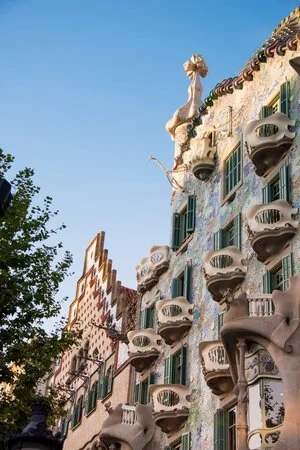
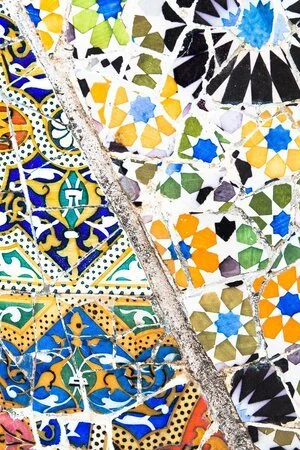
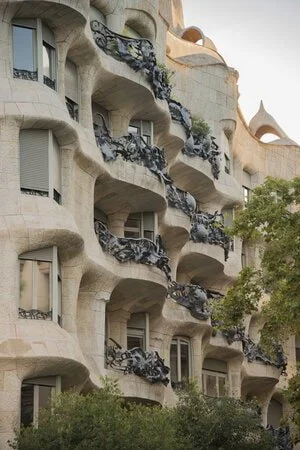


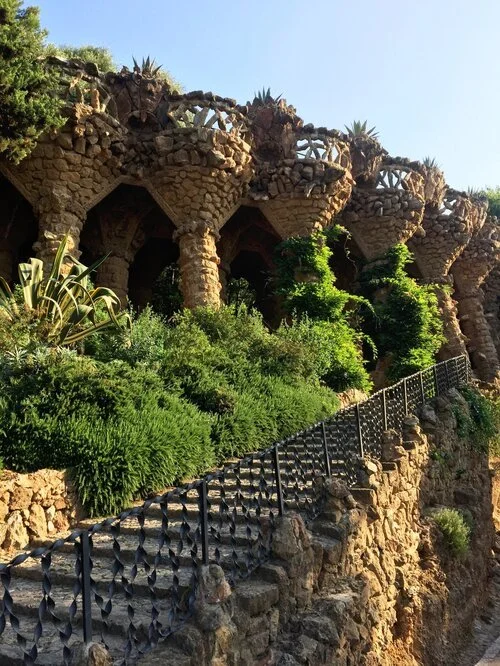
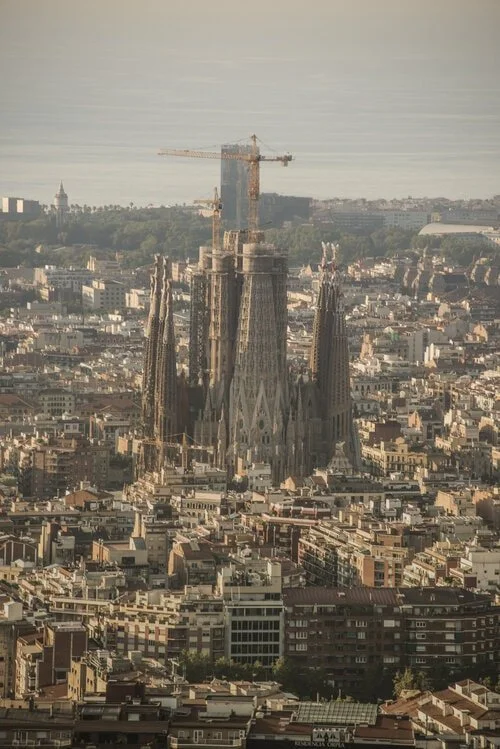

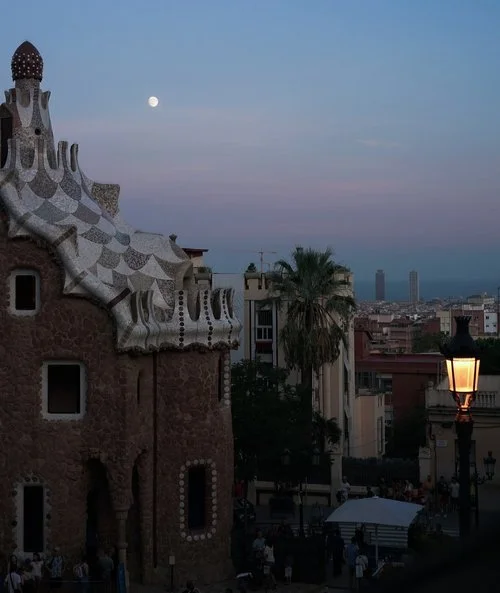
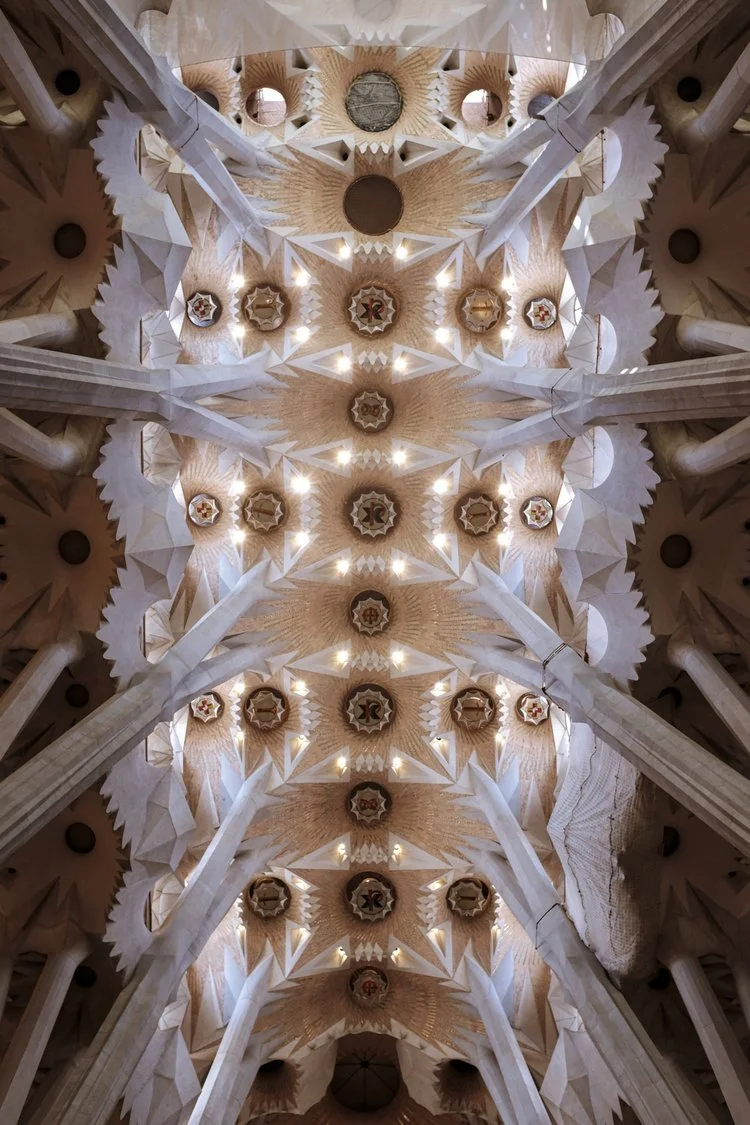
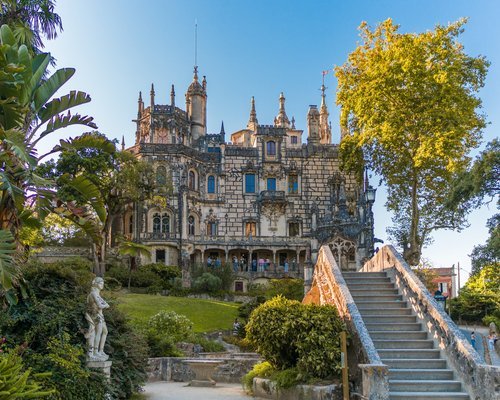
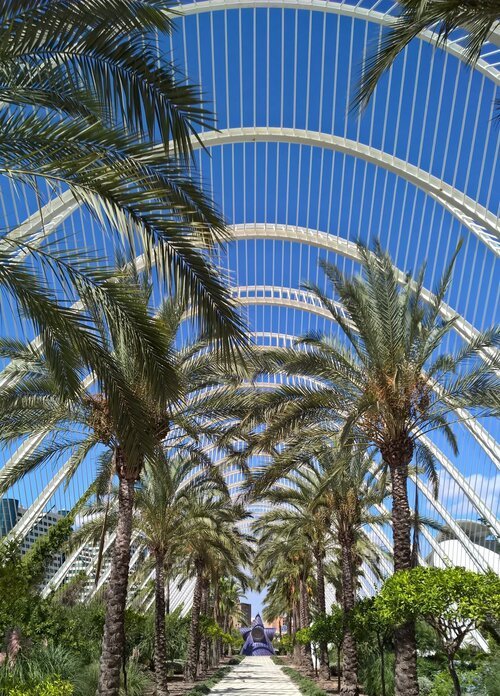
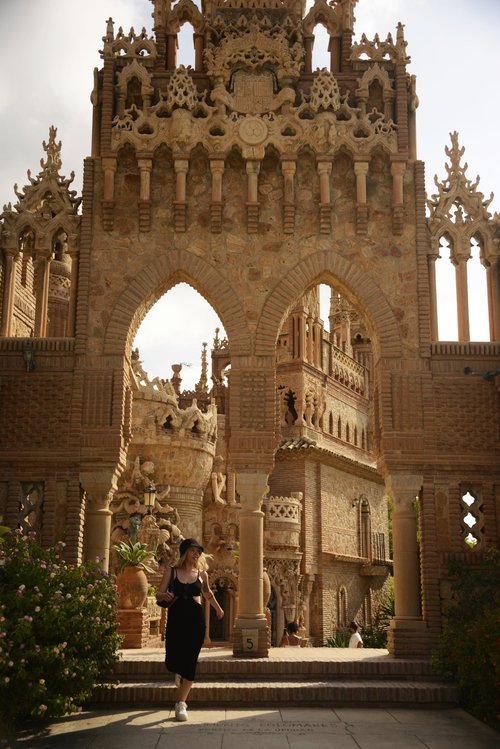
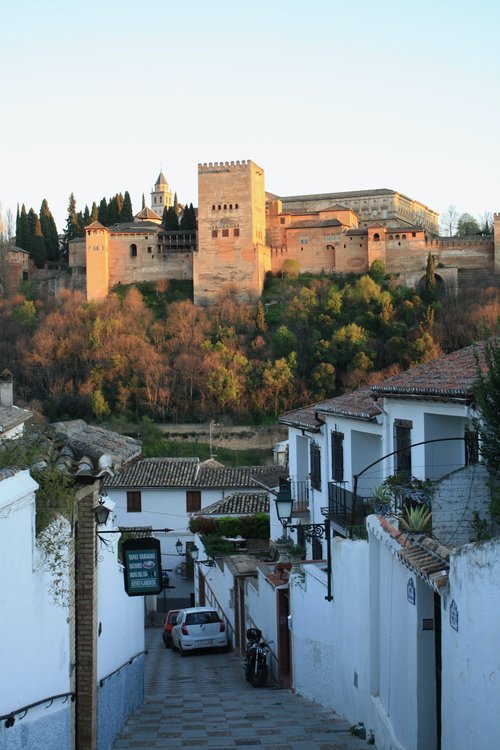



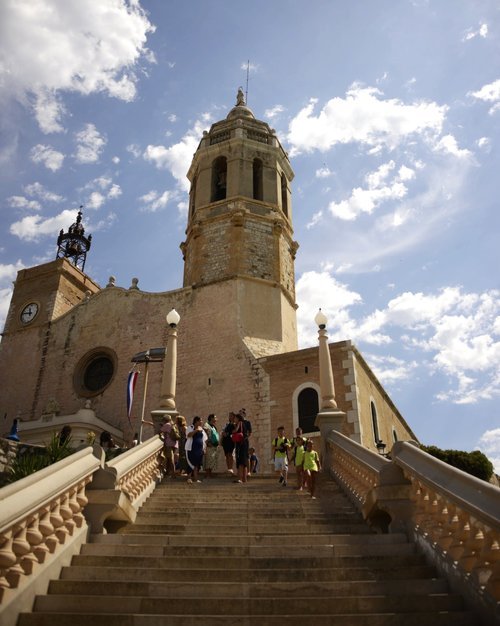

World Heritage Sites and awe-worthy museums colour Spain’s capital as a riveting escape. With food, fiestas and fascinating art at heart, you may be wondering how to spend 2 days in Madrid. Before you jet-set off on your Spain trip, save this ultimate 2-day Madrid itinerary.